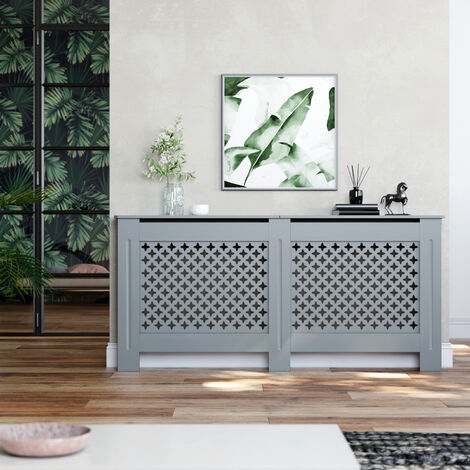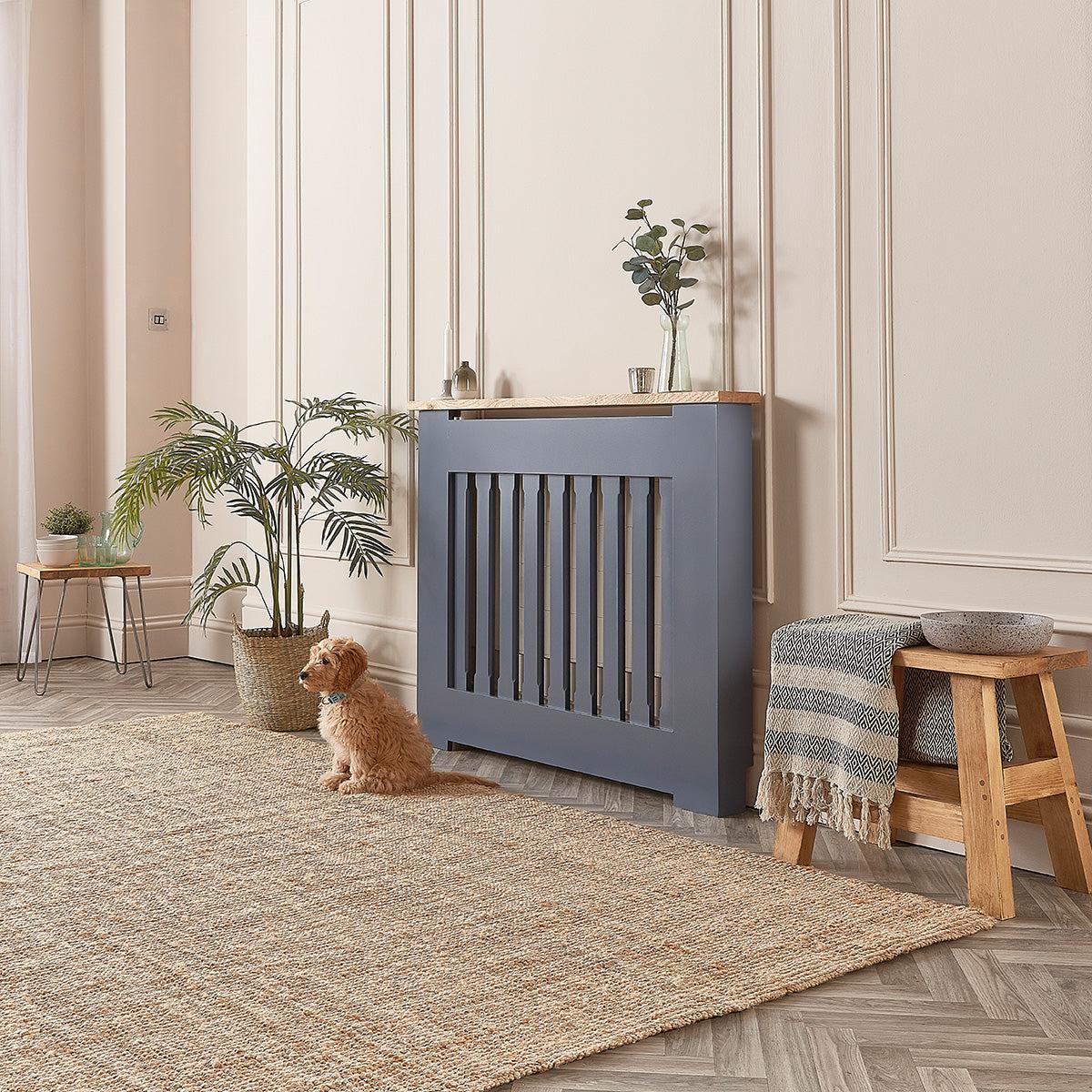Radiator Cover Solutions for Small and Huge Areas
Radiator Covers: Recognizing Products, Styles, and Benefits
Radiator covers serve both useful and aesthetic objectives within a home, providing an array of materials such as mdf, metal, and wood to suit numerous style choices. Selecting the right radiator cover entails comprehending the subtleties of materials, designs, and their connected advantages.
Sorts Of Materials


Wood covers, frequently crafted from woods such as oak or maple, provide a timeless, cozy look that enhances conventional insides. Their toughness and ability to be stained or painted add to their flexibility. Steel covers, commonly made from steel or aluminum, are favored for their robustness and modern-day look, typically featuring smooth lines that enhance contemporary rooms.
MDF, a manufactured timber item, is popular for its cost-effectiveness and convenience of personalization. It can be repainted or ended up to match existing decor while using a smooth surface area. Plastic covers, while much less usual, are lightweight and resistant to wetness, making them appropriate for damp settings.
Inevitably, the choice of material for a radiator cover should align with the house owner's design choices, useful requirements, and the specific environment where the cover will be installed. Each material offers a distinct character, guaranteeing that there is a choice to fit every taste and setting.
Popular Design Styles
Emphasizing aesthetic appeal, preferred layout styles for radiator covers mirror an array of preferences and interior decoration fads. Typical layouts frequently feature elaborate woodwork and ornate outlining, making them appropriate for traditional or vintage-inspired interiors. These covers generally include sculpted elements, providing a cozy and welcoming feeling to any kind of space.
On the other hand, contemporary layouts concentrate on minimalist looks, defined by clean lines and underrated style. Materials such as metal or streamlined wood with a smooth finish are commonly made use of, enabling these covers to mix flawlessly into modern rooms. Industrial designs, on the other hand, welcome basic materials like revealed steel and concrete, adding a vibrant statement to loft space or metropolitan settings.
For those looking for a distinct touch, bespoke layouts provide customization choices that cater to private preferences, allowing homeowners to choose shades, patterns, and materials that match their style. Furthermore, farmhouse-style covers incorporate rustic elements, featuring troubled timber and easy kinds that stimulate a comfortable, nation beauty.
Benefits of Radiator Covers
Radiator covers not just boost the aesthetic charm of an area but likewise use several useful advantages that make them a worthwhile addition to any type of home. Among the key advantages is safety, especially in families with family pets or youngsters. Covers lower the risk of burns from hot radiator surfaces, making sure a more secure environment.
Additionally, radiator covers can enhance power performance. By routing heat into the room as opposed to permitting it to run away, they aid keep a consistent temperature, decreasing heating expenses gradually. This is specifically beneficial in older homes where radiator systems may be less efficient.
One more significant advantage is sound reduction. Radiators can often create undesirable noises throughout procedure, and covers can aid muffle these noises, adding to an extra tranquil home. In addition, radiator covers can be useful, giving additional storage or screen area, thus making best use of the energy of often-overlooked locations.
Lastly, they can shield radiators from dirt and debris, navigate to this site which can prevent performance and increase upkeep requirements. With these integrated benefits, radiator covers become a useful solution for boosting both the performance and style of any kind of home atmosphere.
Installation Factors To Consider
Setting up radiator covers calls for cautious consideration to make certain both performance and safety (Radiator cover). Evaluate the measurements of your radiator and the surrounding area to make certain an appropriate fit. Exact measurements are critical; an ill-fitting cover can block heat circulation or create security hazards
Next, examine the material of the cover. While wood offers aesthetic charm, metal alternatives may supply much better durability and warm resistance. Consider the weight of the cover also; larger covers might require extra assistance or reinforcements to avoid drooping or damages gradually.
Air flow is another important facet. Covers must feature appropriate air movement to stop overheating and preserve reliable home heating. Look for styles with slats or openings that permit warmth to circulate without obstruction.
Furthermore, make sure that the cover is firmly placed to prevent accidents, particularly in homes with kids or pet dogs. Radiator cover. It's recommended to follow the producer's setup guidelines carefully and, if needed, seek advice from a specialist for intricate installments
Upkeep and Treatment Tips
Correct upkeep of radiator covers is important for ensuring their long life and optimum efficiency. For painted or timber covers, think about a suitable gloss or protective covering to keep their look.
Examine the covers occasionally for indicators of wear or damage, such as splits or peeling off paint. Attending to these issues without delay can stop further damage. Make sure that the covers are securely attached and look for any kind of loose screws or installations, as vibrations from the radiator can loosen them with time.
In chillier months, avoid putting heavy items or decorative products on top of the radiator covers, as this can hamper heat distribution and create unnecessary stress and anxiety to the framework. Last but not official site least, consider seasonal upkeep by eliminating the covers for extensive cleansing and inspection throughout warmer look at this site months when the furnace is inactive. Adopting these basic treatment tips will boost the efficiency and aesthetic charm of your radiator covers, guaranteeing they offer their purpose successfully for years to come.

Final Thought
In summary, radiator covers offer as aesthetic and functional improvements to residential areas. The diverse series of materials, including woods, metal, MDF, and plastic, permits for positioning with various style styles such as traditional, modern, industrial, and farmhouse. The benefits of these covers expand beyond safety and security and energy performance to include extra storage space and dust protection. Careful consideration of installment and maintenance more ensures the durability and effectiveness of radiator covers in any type of home setting.
Radiator covers offer both aesthetic and practical functions within a home, supplying a range of materials such as wood, steel, and MDF to suit different style choices. Picking the right radiator cover includes understanding the nuances of materials, styles, and their linked advantages.Emphasizing aesthetic appeal, popular design styles for radiator covers show a variety of tastes and interior style patterns.Radiator covers not just improve the aesthetic charm of a space however likewise use numerous functional advantages that make them a rewarding enhancement to any kind of home. Take into consideration the weight of the cover as well; larger covers might call for added assistance or supports to prevent drooping or damages over time.